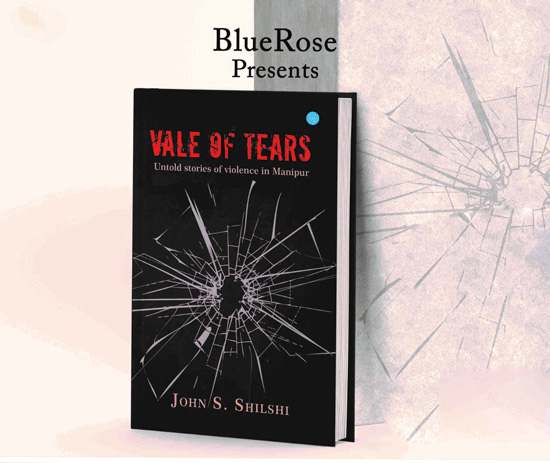Author: John S. Shilshi.
Publisher: Bluerose Publishers, New Delhi.
Year of release: 2020.
Pages: 115
Price: Rs. 320/-
John S. Shilshi’s fact-laden memoir, Vale of Tears: Untold Stories of Violence in Manipur is a rare firsthand account of select incidents that transpired in Manipur during, arguably, the state’s most turbulent period, the 1990s. Coming from a top cop who directly supervised the resolution of the incidents vividly recounted in the short memoir, things that were either unreported by the press at the time or partly concealed by government reports, wherever applicable, are bared for public viewing for the first time. It is possible that the details of the incidents recollected are already known to some. But, for the majority, it is most likely to be new. At any rate, Shilshi’s book is expected to contribute in providing a more rounded understanding of the period, the 1990s.
There are two kinds of readership the book contemplates: The armed forces, and the general readership. And each group is likely to have a somewhat different response to the book. For the armed forces, the memoir is a storehouse of experience of a high-performing cop, and therefore, the specifics of some of the chapters can be considered appropriate for incorporation in the training manual, or for personal reference (for a serious cop). This is because the standalone chapters are not mere descriptions of incidents as they unfolded before the author’s eyes (or as the author recalls them), but objectively, and conscientiously, Shilshi reflects on his actions and those of others related to the incidents, making the book a useful propaedeutic in ethics for a lawman (both serving and aspirant).
As for the non-armed forces readership, at the least, the memoir allows for a better understanding of the struggles and challenges faced by a dedicated cop during the most turbulent period (the 1990s) in the state’s history after merger with India. The period had witnessed the breakdown of inter-community relations in the state unlike before – Naga-Kuki protracted bloodshed of 1992-97, Meitei-Meitei Pangal hostility of 1993, Kuki-Paite bloodbath of 1997-98, etc., — the effects of which are still palpable today in state politics. From the perspective of a policeman of the law, the period was particularly difficult as the contest for territorial control and influence between the armed forces and the various rebel groups intensified and spilled into the homes of innocent civilians.
As the hands of time pull us further away from the 1990s, the sequences of many events have also become murkier, increasing the possibility of selective (and even manipulative) remembering. But Shilshi is very categorical about the purpose of his memoir (as declared in the Preface) which is reflected in the writerly choices he makes in the book. As one reads through the gripping chapters (nine in total), one becomes aware of his attempt to suppress the temptation of embellishment that generally comes with distance and memory. The book as a whole is essentially a memoir, but Shilshi often ‘lapses’ into the more ‘academic’ approach as he ‘litters’ the chapters with citations. In a typical memoir, citations are seldom included, or they are at the most optional. But Shilshi’s otherwise stance in the book is evidence that he is consciously making an effort to be as objective and rational in the recounting of incidents that he personally oversaw their resolution.
In terms of overall approach, a sort of ‘double-gaze’ seems to operate in the book. Shilshi is keenly aware of his emotion and the legality/inhumanity of the incidents when he experienced them first, and also aware of his altered or reconfirmed emotion about the same incidents (and the need to reconcile them for envisioning a better future, etc.), when recalling them during the writing of the book. This is evidenced by his balanced position on the Naga-Kuki ethnic conflict, the internal hostility that existed between the armed forces, and the use of a mild language towards political overreach by some politicians, etc. Therein, in my view, lies the merit of the book.
For some, the length of the book can be a small disappointment. But given the subject matter of the book, and because each chapter is independent of the others, the disappointment can be largely mitigated, for there is no real pressing need to read to the end to know what happened (like in a novel). Some may also wish that there were more biographical details about the author; for it is a rare feat for a small-town boy, who began his Police Service in Manipur ending up serving in key security set up of the country for several years, such as the Intelligence and the National Security Council Secretariat in New Delhi before retiring. But then, the book is expressly about the incidents, and therein should the readerly focus lie, I guess.












